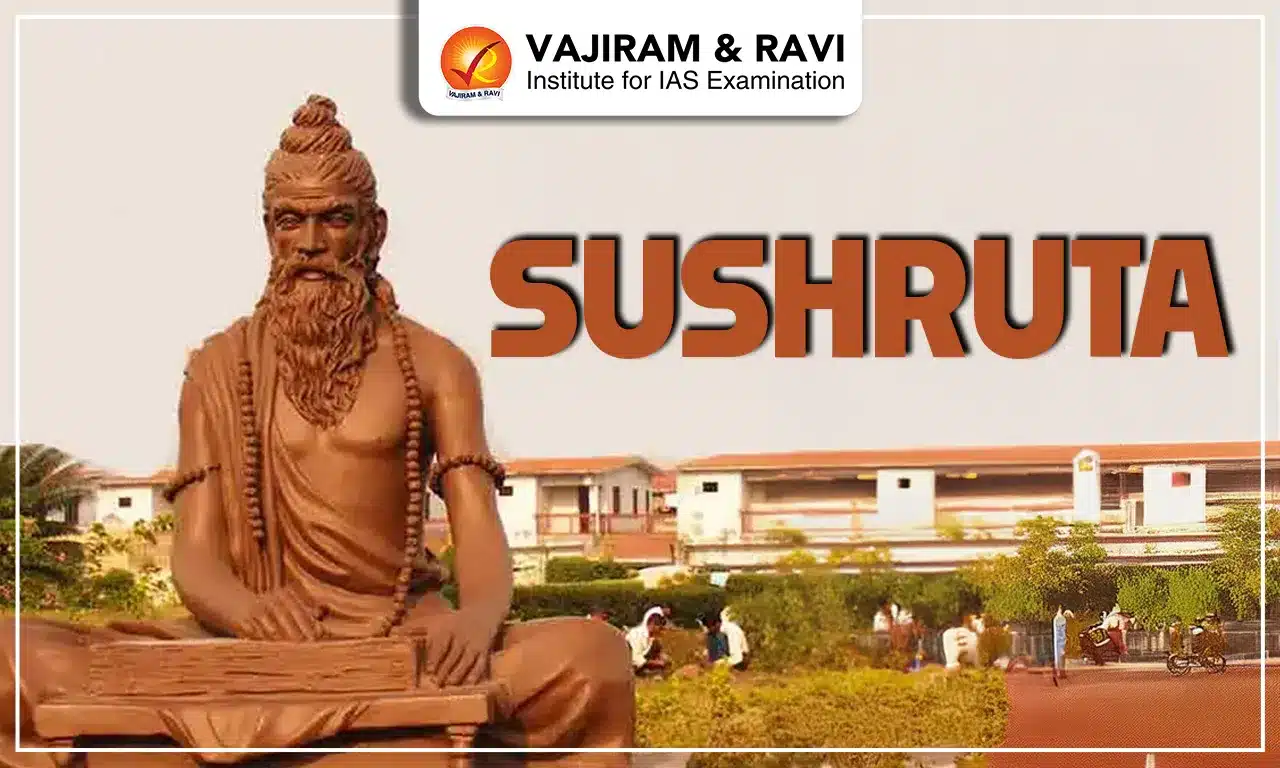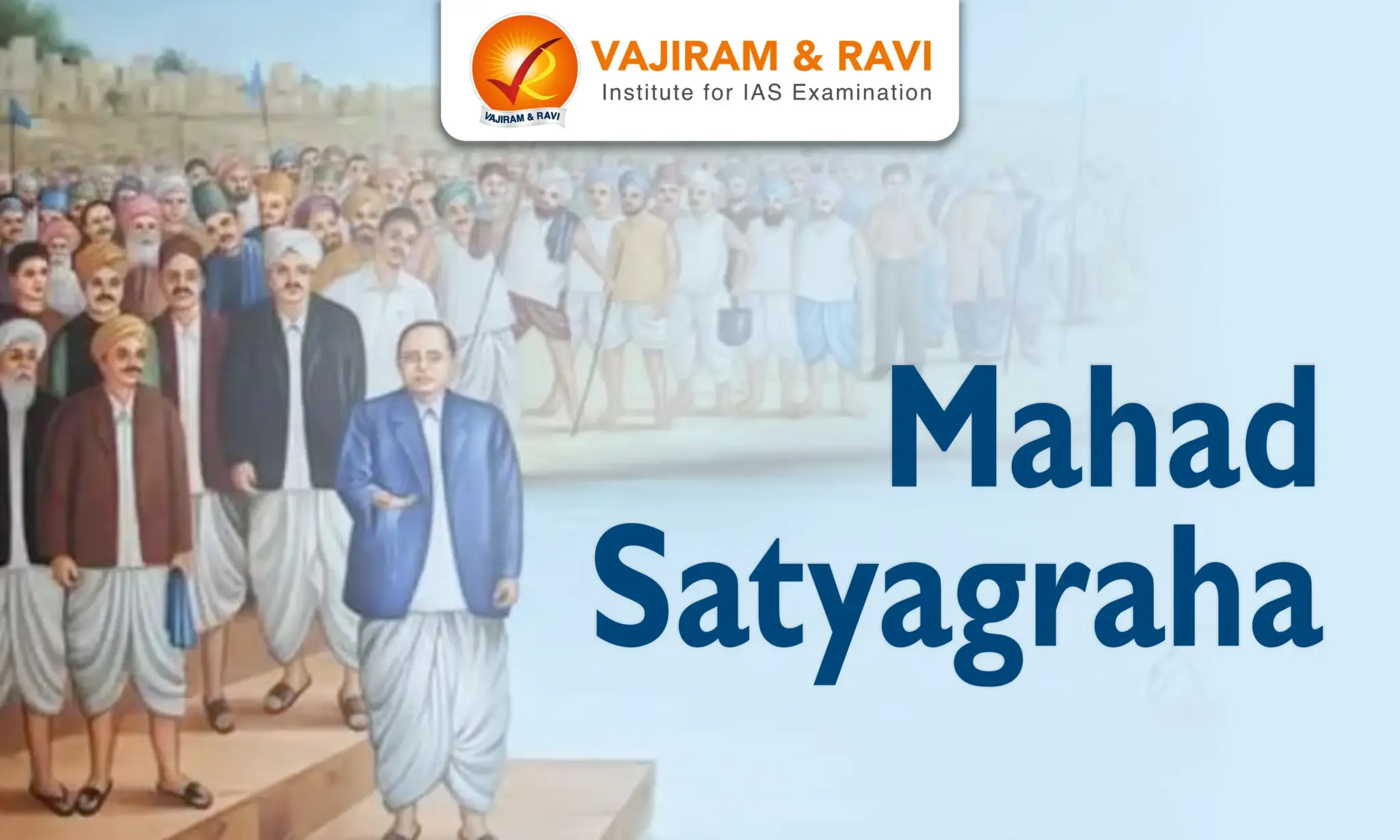Sushruta was an ancient Indian surgeon (around 7th century BC) and is the author of ‘Sushruta Samhita’, a comprehensive textbook on medicine and surgery. He is known as the "Father of Plastic Surgery" and is credited with the advancement of medicine in ancient India. Sushruta took surgery to admirable heights and that era was later regarded as ‘The Golden Age of Surgery’ in ancient India.
Background about Sushruta
Sushruta is thought to have been born in the 7th century BC in eastern India. He belonged to a rich heritage of learned scholars.
- Sushruta is considered a son of Sage Vishvamitra.
- However, Late Vedic hymns attributed to Sushruta suggested that he flourished in the late Vedic period, which would place him around 1000 BCE.
Sushruta’s Literary work
Sushruta Samhita: It is regarded as one of the 'Great Trilogy of Ayurvedic Medicine' (Charaka Samhita, Sushruta Samhita and Astanga Hridaya) and is the foundation of the ancient Hindu form of medicine known as ‘Ayurveda’.
- "Sushruta Samhita" relates to the school of surgery and contains principles of surgery, a description of more than 100 surgical instruments, a description of operative procedures, 650 drugs, and descriptions of anatomy, embryology, toxicology, and therapeutics.
- The Sushruta Samhita is organized into five major sections:
- Sutrasthana: Primary principles dealing with basic principles of medical sciences and pharmacology;
- Nidana: It deals with pathological concepts;
- Sarirasthana: On human anatomy;
- Chikitsasthanam: On medical and surgical management;
- Kalpasthanam: On toxicology.
Contribution of Sushruta in Medicine
Sushruta is regarded as the 'Father of Indian Medicine' and the 'Father of Plastic Surgery.' Modern-day Ayurveda heavily draws from the Sushruta Samhita. This ancient text outlines a holistic approach to medicinal treatment, categorizes the divisions of Ayurveda, and expounds on Sushruta's unique methods for Panchakarma and other specialized treatments.
- The contributions of Sushruta are not only limited to the surgical field but also extended to the different branches of anatomy, embryology, gynaecology, obstetrics, paediatrics, toxicology, medicine,etc.
Contribution to Surgery
Sushruta is known as the ‘Father of Surgery’. He was among the first people in history to propose that surgical students should learn about the human body and its organs by dissecting a dead body.
- Sushruta induced anaesthesia using intoxicants like wine and henbane for a successful surgery.
- He specialized in rhinoplasty (plastic surgery) and ophthalmology (cataract ejection).
- India was the first place where rhinoplasty (developed by Sushruta) was invented and used, and even modern science agrees with this.
- Sushruta has described surgery under eight heads:
- Chedya (excision)
- Lekhya (scarification)
- Vedhya (puncturing)
- Esya (exploration)
- Ahrya (extraction)
- Vsraya (evacuation)
- Sivya (suturing)
Contribution to Anatomy
Sushruta was one of the first to investigate human anatomy. He describes in detail the study of anatomy with the aid of a dead body in the Shusruta Samahita.
- The study of anatomy is covered in the ten chapters of Susruta Samhita's Sarirasthana.
- Significant anatomical considerations of the ancient Hindu are found in his work.
- There is also compelling evidence that Sushruta revealed his knowledge of human anatomy through both surface inspection of the human body and human dissection, as he believed that students aspiring to be surgeons should have a good understanding of the structure of the human body.
Other Contributions by Sushruta
- Aside from trauma involving general surgery, Sushruta detailed the treatment of 12 different types of fractures and six different types of dislocations.
- He discussed the principles oftraction, manipulation, apposition, stabilisation, and postoperative physiotherapy.
- Sushruta also recommended methods for stimulating hair growth and removing unwanted hair.
Last updated on November, 2025
→ Check out the latest UPSC Syllabus 2026 here.
→ Join Vajiram & Ravi’s Interview Guidance Programme for expert help to crack your final UPSC stage.
→ UPSC Mains Result 2025 is now out.
→ UPSC Notification 2026 is scheduled to be released on January 14, 2026.
→ UPSC Calendar 2026 is released on 15th May, 2025.
→ The UPSC Vacancy 2025 were released 1129, out of which 979 were for UPSC CSE and remaining 150 are for UPSC IFoS.
→ UPSC Prelims 2026 will be conducted on 24th May, 2026 & UPSC Mains 2026 will be conducted on 21st August 2026.
→ The UPSC Selection Process is of 3 stages-Prelims, Mains and Interview.
→ UPSC Result 2024 is released with latest UPSC Marksheet 2024. Check Now!
→ UPSC Prelims Result 2025 is out now for the CSE held on 25 May 2025.
→ UPSC Toppers List 2024 is released now. Shakti Dubey is UPSC AIR 1 2024 Topper.
→ UPSC Prelims Question Paper 2025 and Unofficial Prelims Answer Key 2025 are available now.
→ UPSC Mains Question Paper 2025 is out for Essay, GS 1, 2, 3 & GS 4.
→ UPSC Mains Indian Language Question Paper 2025 is now out.
→ UPSC Mains Optional Question Paper 2025 is now out.
→ Also check Best IAS Coaching in Delhi

















